Resurrecting the Champ - GIGABYTE AORUS X299 SOC Champion!
So, here’s another one from GIGABYTE, or AORUS if you will. The new generation Champion board which, true to its name, was the board to beat at some point holding 26 Global first places and some world records on HWBOT. A truly impressive feat and one that obviously speaks volumes about the motherboard.
That is all obvious though and we saw the press release, so there’s nothing new there nor anything I might add to that. As with all motherboards (or any other component for that matter) the truth is where the rubber meets the road and how well it does outside the vendor’s labs, in the wild and somewhat inexperienced hands.
Ultimately, what could this motherboard do with no guidance from seasoned overclockers and a random CPU sample? Well, that is the entire point of this editorial. Try not think of it as a review (hence no score or award) but rather an experience from my perspective on what the motherboard is and isn't capable of.
Before I go further, please note that the scores are not great. In fact, they show very low efficiency which has everything to do with the OS, my lack of tuning abilities and using memory that was in no way, shape or form appropriate for what I was doing. These results were not meant to be competitive, but simply trying to find out if it is possible to reach those high frequencies which GIGABYTE had shown off and claimed were possible on their motherboards. After all, just about any frequency is possible on any board under the right conditions. The truth is not everyone buying a motherboard will be an expert overclocker. In fact, there are likely more average to substandard ones than there are great ones, much like in anything else. So as always, this is for the most part a worst-case scenario.
Believe it or not, while I was in the middle of this editorial, a long time after having tested the Champion, things changed and it turns out that while this particular model will never or is unlikely to ever see the light of day outside the lab and a few other boards GIGABYTE sent out to overclockers, the model that will end up in retail is actually even better. That’s right, there is a retail model which officially supports LN2 overclocking of the 18 core INTEL CPU and has been tested to do as much internally - something that was not officially supported and likely not possible with the original model which this editorial is based on. It is not modesty that has me write that this is a worst-case scenario, it literally is as if you’re in any way convinced by the Champion you’re going to end up with a more capable motherboard than I did when this editorial was written.
Of course, we have been here before with the X99 platform where we had something akin to two generations of boards. The first iterations, while adequate, weren’t spectacular in any way and it took a second attempt to truly bring out the most from the platform. It was the overclocking SKUs which always arrived later than the mainstream products which laid the foundation for the 2nd generation boards (at least where GIGABYTE is concerned). I’m confident you’ll recall that the X99 SOC-Champion ushered in the Socket switch, which was eventually adopted on all 2nd generation X99 boards from GIGABYTE. All of them were better than their previous counterparts in every possible way (performance and tuning)
With that in mind and a better version on the horizon, does it mean that these results are invalid? Of course not. The newer model builds on this very foundation, and for those like me who are using the lower core count CPUs (who would have thought that 10 cores would be considered a lower core count?) there’s no functional difference between this model and the new one you’re likely to see.
So how was the actual overclocking?
Well, as with all motherboards and all platforms, one has to learn the behavior. Board behavior is easier because you’re dealing with a single board and can make comparisons between BIOS updates etc. However, platform familiarity comes via having used several boards from different vendors through which general rules and understanding would emerge.
With the X299 SOC-Champion you’re somewhat dealing with a double-edged sword. GIGABYTE has always used the same UEFI on their products regardless of the SKU, so from the lowest end X99 board (for instance) to the highest end - the UEFI is the same where overclocking options are concerned. Barring the Socket switch on the X99 boards, you were presented with the same options which did exactly the same thing on all boards.
The good thing about this is that you could come to be familiar with a platform on GIGABYTE’s more mainstream boards, practice and nail down the intricacies, then apply that knowledge almost on a 1:1 basis to the Champion board for your extreme overclocking adventures. This means that you don’t necessarily need to have the Champion board in front of you to get familiar with it. You can tune on the X299 GIGABYTE you have right now and, depending on the level of tuning, export those settings directly to the Champion.
The down side of this is that even though you may have extensive knowledge about the GIGABYTE X299 boards, whatever you learn there doesn’t necessarily mean it will apply at all to other competing boards. In fact, you’d have to re-learn and re-adjust how you tune the system for the most part.
One of the major differences between the Champion and its inevitable and obvious competitor, the APEX, is in how they deal or behave when you’re overclocking the Mesh frequency. With the Champion, you need significantly lower voltages for the same Mesh frequency as you would use on the APEX. Around 1.3V or at most 1.35V I found usually did the trick, whereas as per APEX overclocking guide, you’d want 1.4V and higher. If you only ever experienced LN2 on these two boards, you’d be hard pressed to make any conclusions about the platform, but you can about the boards.
That the Champion scales accordingly on air and LN2 overclocking is in many ways what makes it so easy or simple to overclock. Your limits on the mesh frequency again are going to be temperature (at least on this particular CPU), and you may find that the same 1.3V on air/AIO cooling nets you 3.8GHz under LN2 instead of 3.2GHz. This is but a single example, and for the actual overclocking on LN2 I found that not stressing the Mesh frequency too much was key to avoiding trouble and instability.
In fact, the approach I used was to get the scores first, then tweak them higher via the Mesh frequency as it can have an unpredictable effect on maximum memory frequency etc. So, being the person, I am, I’d rather isolate the different parts of the system, rather than hope that the memory runs well enough in tandem with a high Mesh frequency.
That aside, the Champion perhaps in line with the previous X99 board has some difficulty with 1T command rate is used. This ultimately won’t make much of a difference in the newer benchmarks, but for those still running the older ones this can have huge implications and you may have to compensate for it in other ways. For instance, running 1T reliably over 3,733MHz may prove troublesome, but with enough manual tuning you probably could. I had neither the time nor skill to achieve this, but have seen others do it so I know it is possible. I settled on 2T and tried to optimize somewhere else for performance.
When it comes to the standard XOC C12 or C11 4000MHz runs, the Champion may not be able to achieve this either, but that was with the X11X BIOS and older. The newer versions and the newer board are likely to have this sorted, but this was my experience with the original board. Much like with the command rate, but perhaps more pronounced, you’ll have to find the performance somewhere else, or simply settle for more relaxed primary timings and tighten the secondary and tertiary timings even more. Whatever your solution, it is clear that you can compensate for these as shown by the massive number of global first place benchmark results that this motherboard achieved.
Ultimately, while these could be limiting, you have to realize that you’d actually have to test efficiency before assuming that you’re losing it compared to another board which can do all this with relative ease. There’s a lot to board performance and, as you may know, the CPU sample plays a huge role in where a board places itself in the rankings and what scores are achieved. On paper there may be a clear and better board, but in practice and when you count the results at any given time, you may find the opposite is true or not so clear. So once again, you have to decide what metric you’re using and realize that no board is going to magically generate efficient scores for you at this level because you have to tune that yourself.
During the initial run with the Champion, it performed and behaved as predicted, but I would lose the mount relatively quickly, likely within the hour. This has nothing to do with the motherboard though, but my mounting and the heating plate I was using. Depending on the LN2 container, its surface area, mass etc. the same CPU may perform differently in two consecutive runs. This is purely because of the heat and the size of the die the 7900X has. Cooling it effectively is just as important as dialing in the right settings within the UEFI. If the paste cracks or something else happens, you may be led to believe there’s some other instability and you’ll spend a lot of time trying different UEFI settings to no avail.
This is exactly what happened the first time this board was run and I was convinced something was wrong, only to find that the paste or the mount was simply letting me down. Once this was clear, things improved dramatically and stability was no longer an issue. This applies equally on any other board by the way. The right LN2 container is vital and you have to decide if using a heating plate is worth it, versus having to deal with a freezing board or memory. These are all the details of overclocking unfortunately, which no board can overcome. Details where you as the practitioner have to take charge and find the optimal solution.
The second round of LN2 overclocking with the Champion proved that it was not the board with which I was limited, but the CPU and of course the DRAM. As we all know not all B-die is the same and no motherboard can make up for memory sticks that aren’t quite capable of the high speed C12 or C11 settings, which was the case with the particular memory set I used. Why I didn’t’ use the original Limited Edition sticks which can do C12 4000 - I have no idea - but suffice to say I ended up not tuning memory at all. Moreover, the benchmarks were done on Windows 10, so none of the results are valid, but that’s fine. I was looking at achieving frequencies on the board and nothing more.
As with all things overclocking with LN2, you have to spend plenty of time and plenty of runs to truly nail down detailed behavioral patterns. Windows 10, being what it is, has different stability requirements from Windows 7, and what will completely crash Windows 7 will have no effect under Windows 10. Sometimes the inverse is true as well. The difficult part is finding out which UEFI settings you need to tune to have complete stability under both operating systems. (That said, it is still significantly easier overclocking X299 than X399 in terms of OS behavior)
Since these results were not for competitive purposes, but purely an examination of the X299 SOC Champion, I've no advice on how to stabilize Windows 7 if you are having instability at all. Based on the results others have achieved on the Champion though, you can hit identical limits on the CPU, DRAM and Mesh frequency between the various operating systems, from Windows XP to Windows 10.
As always, the entire point of this is to give my overall impressions of the board and my experience with it. Well, it’s an interesting board - I’ll give it that. On the one hand you have a motherboard that’s pretty much everything right with the entire GIGABYTE X299 range distilled into a single product. However, with that some quirks come along for the ride as well.
There are things that I miss form the original X99 SOC Champion such as the conveniently located front USB ports for easy BIOS updates, drivers etc. These are not performance related, but they sure did help when overclocking, negating the need to reach around the back of the board. I do wish these were here as well, as that convenience is still necessary.
With the Champion, you’re looking at a product that is by all means a culmination of what the company is capable of when they are focused on providing a board for overclockers. It is likely the same efforts that had allowed GIGABYTE to benefit in reputation as the overclocker’s choice for boards right next to any ROG product years ago. Over time though, several boards which were a representation of this simply didn't make it to market for one reason or another, and as a result ground was lost in reputation but not in ability.
I’ve no doubt that between the two competing boards (barring any second revision boards) the Champion is as capable as the APEX when overclocking Skylake-X CPUs. My ideal board would be an amalgamation of these two in some way, but obviously that is not possible. You could do with the Champion and not miss much if anything being offered elsewhere, but the issue again would be if you can buy the Champion at all or not. The latest bit of news seemed to suggest it will see the light of day as mentioned earlier. If that is the case, then we have a true gem on our hands. If that isn’t the case, well then, this board will serve simply as a reminder of what GIGABYTE is capable of producing, but choosing not to manufacture for any number of business related reasons outside the scope of overclocking.
From where I stand, I’m more impressed by the Champion than any other offering GIGABYTE has from the X299 range. Yes, it is designed squarely for overclockers, but I’d wager that there isn’t any other board from the vendor that’s as focused in its purpose. If the X299 SOC Champion doesn’t ever go to production, it’ll be the greatest board GIGABYTE never made. If it does, the X299 competition is about to get even more interesting, as it really is a champion of a board
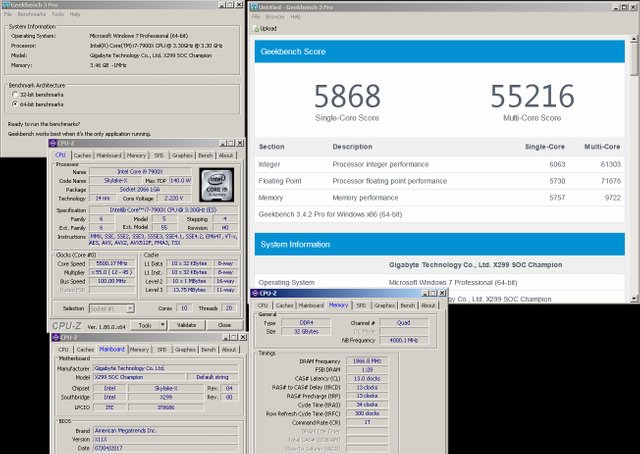
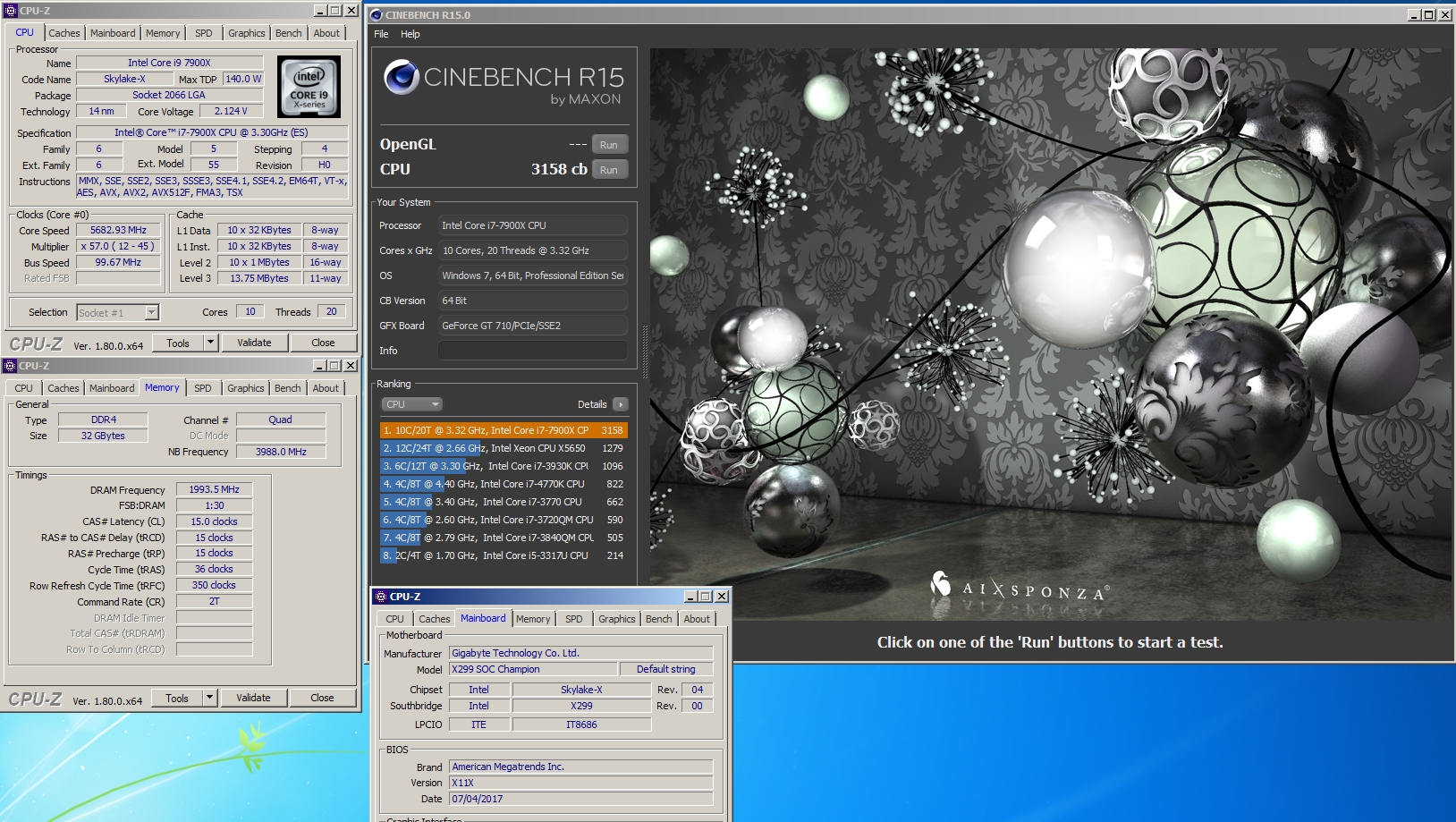
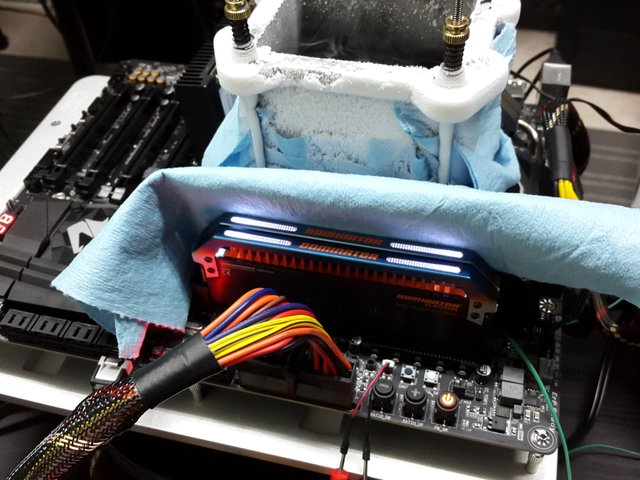
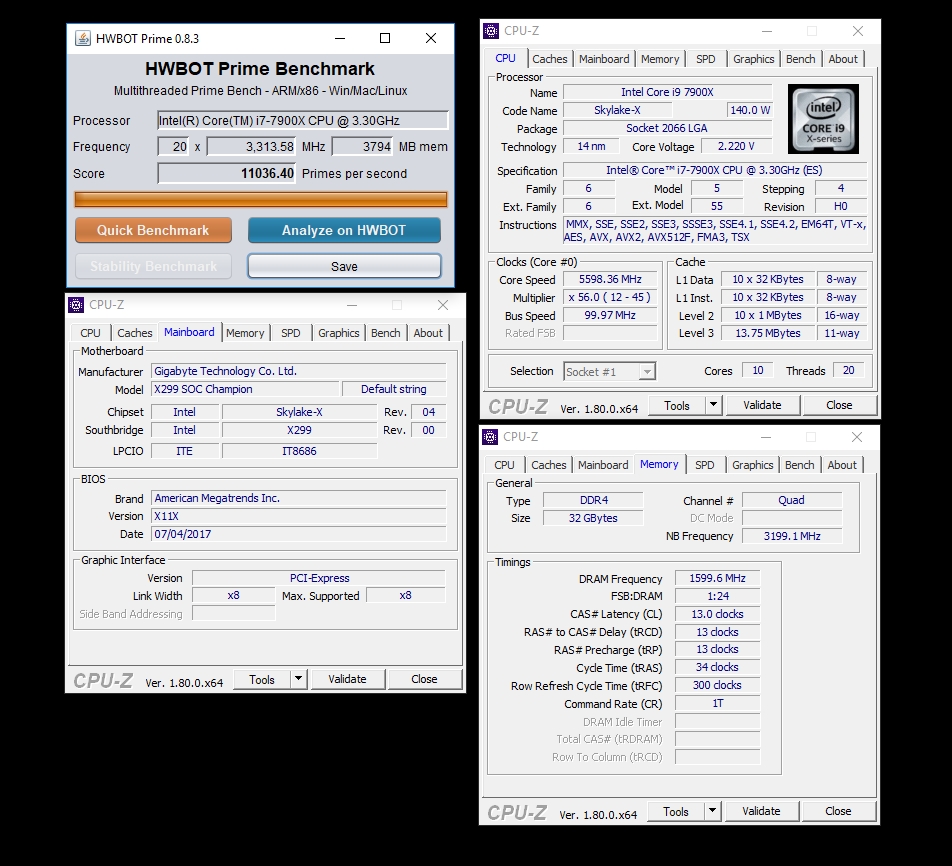
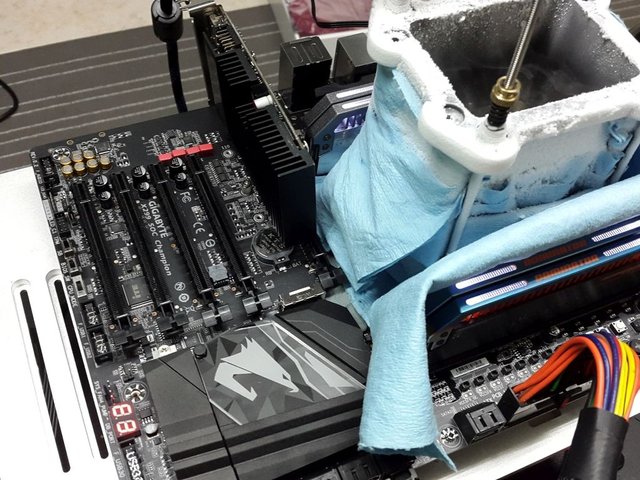
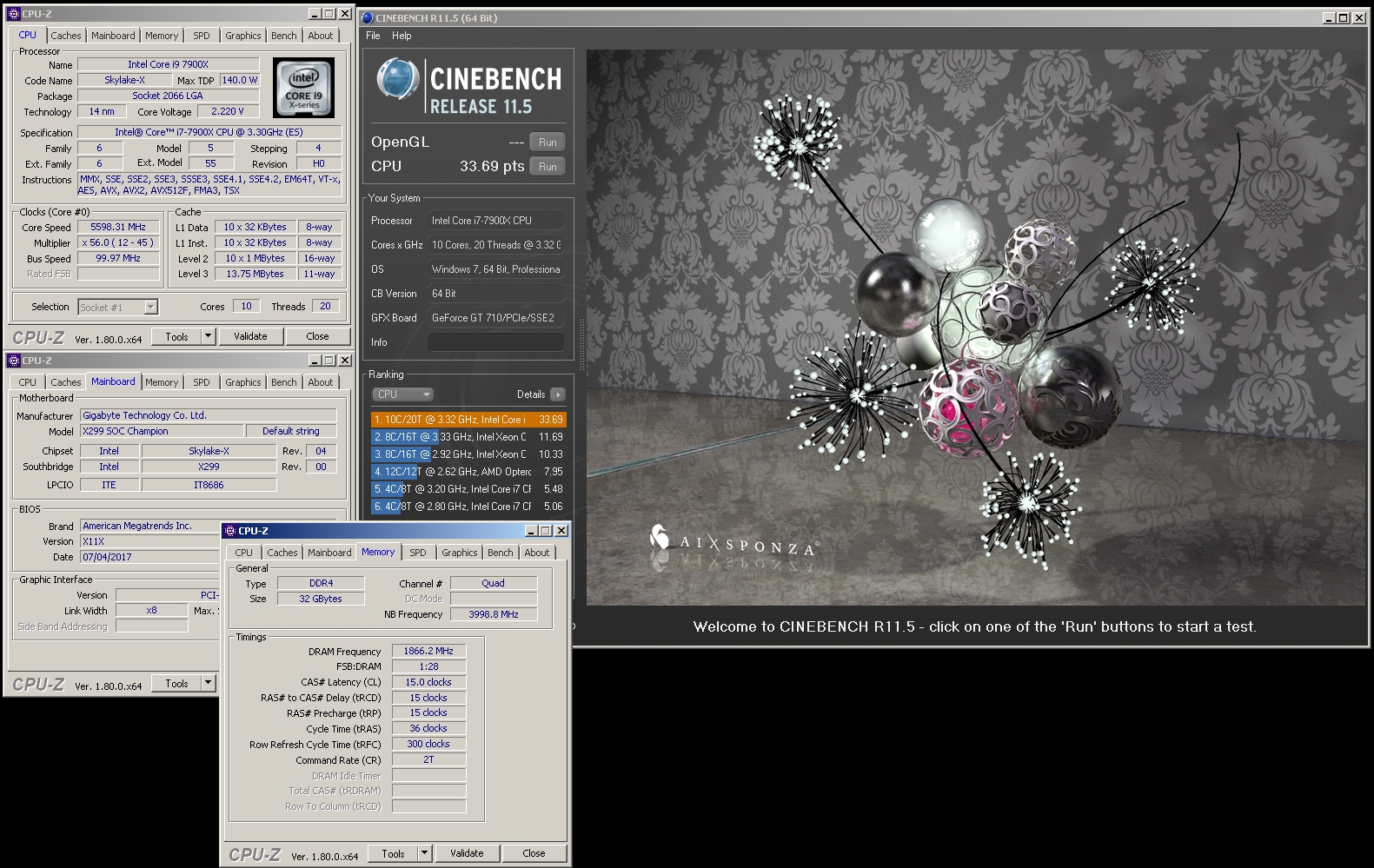
Congratulations @theoverclocker, you have decided to take the next big step with your first post! The Steem Network Team wishes you a great time among this awesome community.
The proven road to boost your personal success in this amazing Steem Network
Do you already know that awesome content will get great profits by following these simple steps, that have been worked out by experts?
Congratulations @theoverclocker! You received a personal award!
Happy Birthday! - You are on the Steem blockchain for 1 year!
Click here to view your Board